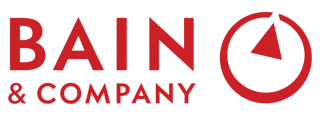Any recommendations on the best practices on how to go about it when we receive data (i.e. charts, graphs, tables, etc)?
- a. Logistics?
1. What to say when receiving the data?
2. How long to initially pause for and what to do / examine during this pause?
3. What to say after this pause?
4. How many pauses to take in total during this chart/data portion, and what should the purpose/aim of each pause be?
- b. Insights?
1. Should we be ready to share trends/patterns/insights after the initial pause, ask clarifying questions on the data/charts (if so, what kinds?), or should we ready to examine / voice out loud all the different components of the charts/data, piece by piece in real time?
2. How long would each take?
3. What trends/insights to share with interviewer and how long should it take, and when (ex. after taking a second pause after discussing the different components on the charts/data and clarifying chart questions)?
4. How long to keep on discussing patterns on the data?
- c. Calculations?
1. Should the interviewer prompt us to make a calculation on the graph, or should we the candidates be the one to say we would like to calculate "xyz" given this data?
- d. Connecting it back to case question / hypothesis / the "so what" etc?
1. How should we connect our chart insights back to the case and share a "so what"?
2. And when: should we try to do this "so-what" step pre-calculation or post-calculation, or during both times?
3. What should we say to effectively make a true link / share the "so what" aspect?
- e. Context / Tips for Bain?
1. Any difference in this approach from the candidate-led versus interviewer-led cases? For context, I am interviewing for Bain.
Case Data (Charts/Graphs/Tables) Logistics Advice


Hi there,
this is a great question because many people feel overwhelmed when being handed the data. First of all, the right approach my vary by situation but there are some general Do's that will help you in any case. Below my considerations:
1. If you have a candidate-led case (Bain, BCG), it will be on you to analyze the data and figure out what to do with it in the next step. If it is an interviewer-led case (McK), you might get more context right away.
2. What I would recommend is quickly scanning the data / chart and gauging if you understand it right away or if you need more time to figure it out. If you need more time, tell the interviewer that you would like to take 60 seconds to go through this. In case there are open questions, try to adress those directly, if they come up during your review, try to bundle them and then ask them all at once.
3. Once you have taken some time to look at it, guide the interviewer through the data and what you will do with it, i.e., "I am looking at a chart of XYZ that will help me calculate ABC which we need to answer our original question of YYY. I will now take column B and multiply it with the factor X to come to the profitability". If it is a graph, you can also mention the two axis and what they are showing to you. That might feel like you are losing time but in the end you just ensure that you understand the chart correctly and you appear very structured when doing it. The interviewer knows the chart but he or she does not know where you are looking at, hence, guide them.
Hope that helps.
Best,
Sebastian

A couple of tips to simplify this process:
1. Keep it natural. How would you perform in front of a real client? Do the same in an interview.
2. Maximize insights from charts. Use an insight + so-what structure for everything you say (e.g., what stands out in the chart and what it implies for the case you are solving).
Happy to coach you on chart interpretation—just send me a message.
Best,
Alberto
—
Explore my latest case inspired by a real MBB interview: TitanTrail - Operations Outsourcing

Let me be frank. There's a lot of nonsense here.
We interviewers do not judge candidates on "how many pauses" or "how long to initially pause" nor "how long should it take". And we don't want people to be discussing patterns. We want people to be solving a problem.
Here's how it works. You have a problem to solve. You get a piece of data. You analyze and "process" the data and you have to verbalize how does it impact the problem / solution. This is critical. Whatever you say has to be connected to the problem you are trying to solve and you start by explaining how it impacts your recommendation (I am repeating myself but really want to underline how important this is).
Then you explain why, i.e., you point out to the analysis you've done.
Let me say this a third time: You don't discuss patterns. You discuss impact on your recommendation, and then point out to all the patterns and data that support that impact.
How long? Let's just say that you have to communicate in a structured and clear way. You make your point. You stop. That's it.
If you start speaking immediately, if you pause for 30 or 60 secs... I don't care, as long as you do what I suggested above. (although, of course, you are quite unlikely to have analyzed the data if you start speaking immediately).

Hey there 😊,
Love how detailed your thinking is! Here's a concise version of how to approach data/graph questions in cases—especially useful for Bain, which is often chart-heavy:
a. Logistics
– When receiving data: Say “Let me take a few seconds to review the exhibit.”
– Initial pause: ~30 seconds to scan axes, units, trends
– After pause: Walk the interviewer through 1–2 key insights, don’t just describe visuals
– Total pauses: One upfront, maybe a second short pause if calculations are needed
b. Insights
– Don’t describe every detail—zoom in on relevant trends
– Clarify only if something is unclear or ambiguous
– Aim to wrap this portion in ~1.5–2 minutes max
– Focus on: “What is this telling me in relation to our objective?”
c. Calculations
– If the math is obvious and helpful, proactively suggest it
– If the prompt is unclear, wait for the interviewer to guide
d. Link to Case / So What
– Always close with:
“So what this tells me is…” → link back to hypothesis or case objective
– Do this after insights and again after math if it changes the narrative
e. Bain Context
– Bain is usually interviewer-led but expects candidate-driven thinking
– Be quick and sharp with chart reads—time is tight
If you want to practice this live and polish your chart reading flow, happy to support you 😊
Best,
Alessa 😇













